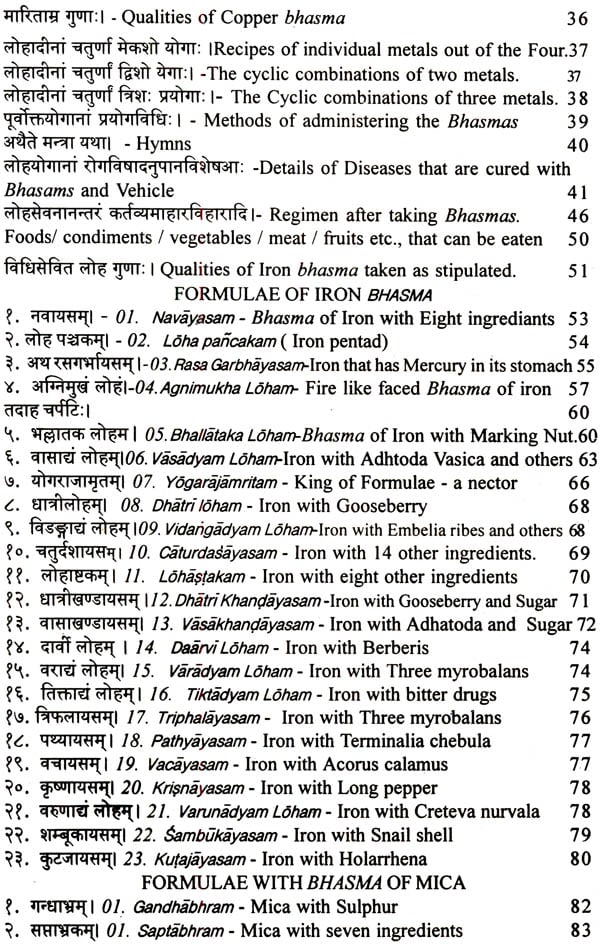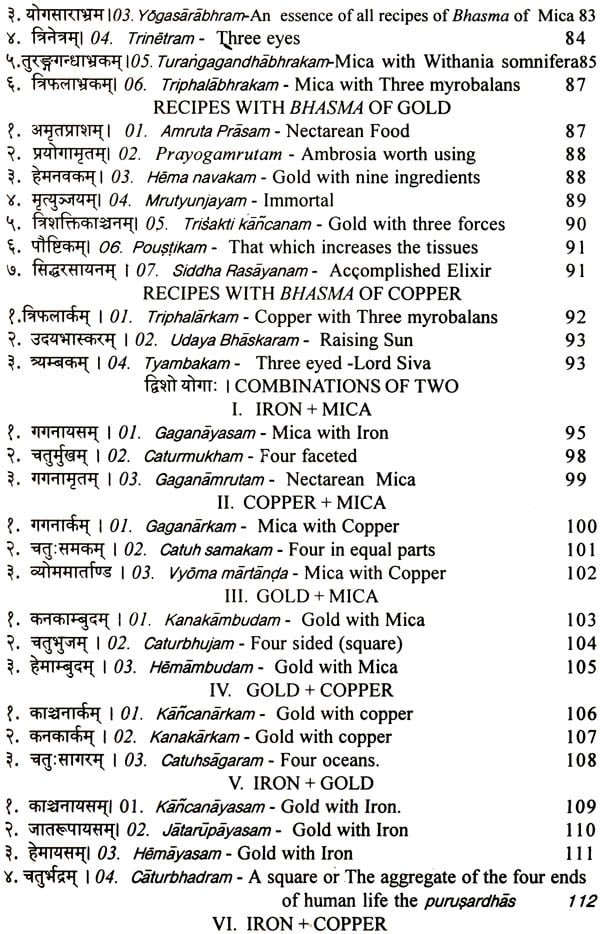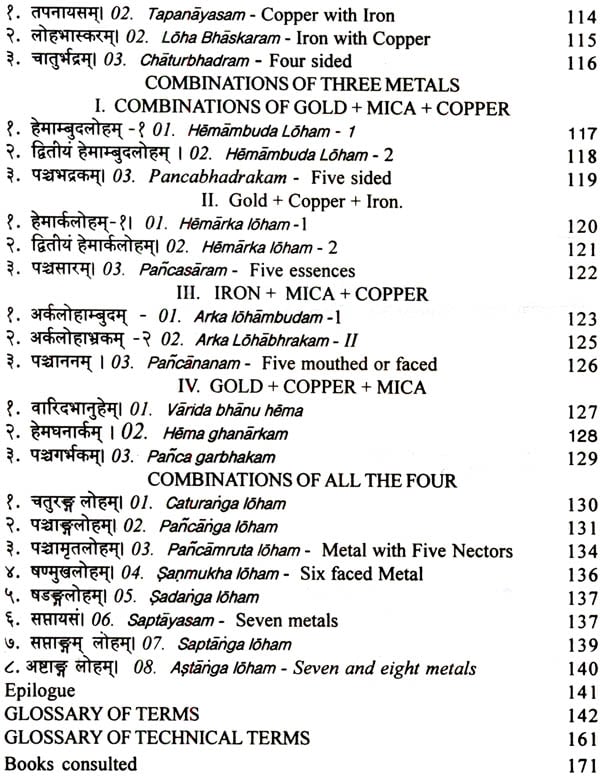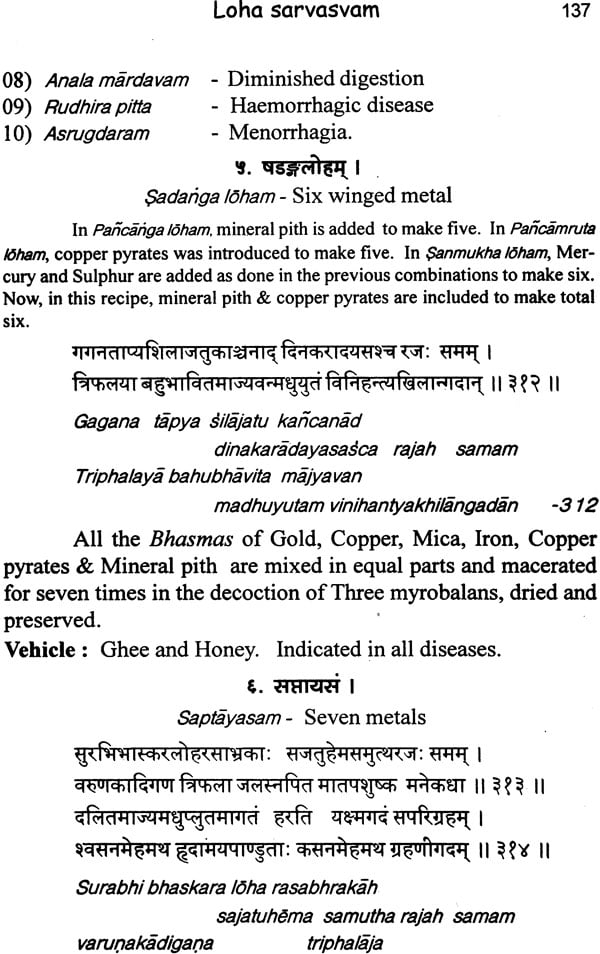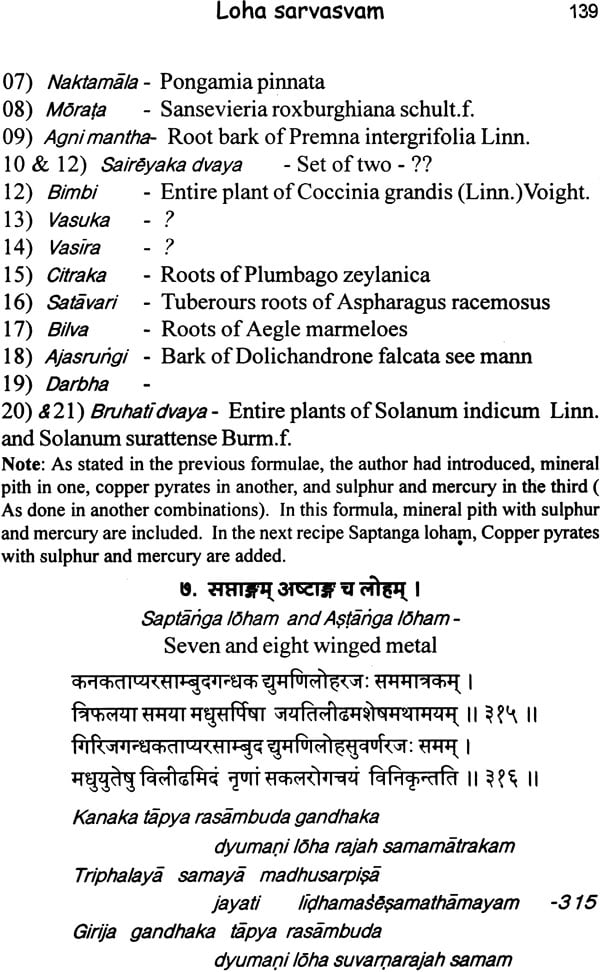
Lohasarvasvam of Suresvara
Book Specification
| Item Code: | NAB808 |
| Author: | Uttam Vaidyaand Pa mmi Satyanarayana Sastry |
| Publisher: | Chowkhamba Sanskrit Series Office |
| Language: | (Sanskrit Text with English Translation Elaborate Notes, Glossary, etc.) |
| Edition: | 2005 |
| ISBN: | 8170801508 |
| Pages: | 171 |
| Cover: | Hardcover |
| Other Details | 8.8 inch X 5.5 inch |
| Weight | 320 gm |
Book Description
From the Jacket
Loha Sarvasvam – a handbook for all Ayurvedists.
Loha Sarvasvam is one of jewels of Rasa Sastra.
A boon given to Rasa vaidyas.
The author Suresvaracarya. Has rightly named the book as Lohasarvasvam, for, it gives all the information of the four metals, purification, incineration, usage in various ailments, vehicles etc.
Four Bhasmas- Siddhamruta-an accomplished ambrosia the Bhasma of Iron;
Divyamruta - the Divine ambrosia, the Bhasma of Mica
Bhasma of Gold and copper and few other herbal drugs like Triphala Curna, Trikatu curna etc., are sufficient to become a successful Rasa Vaidya.
Loha sarvasvam is full of proven formulae that every practitioner can make and dispense. It is just a hand book for any Practitioner of ayurveda. This describes how the cheapest metal the Iron can be used to treat successfully many ailments.
Four bhasmas, dealt in this book are given in a most fascinating cyclic combinations and also as single drugs too.
Vaidya Pammi Satyanarayana Sastry’s English translation is very lucid. Latin names for all the herbals were given for better understanding avoiding the confusing local and other names.
Glossary is added for the convenience of the practitioners, researchers and teachers.
Preface
Ancient texts of ayurveda viz. Caraka samhita, Susruta samhita, Astanga sangraha, Astanga hridaya, are mostly collections of earlier practices fortified with the philosophy of Ayurveda. Later works of several small and renowned practitioners mostly based on their experiences have gone into oblivion due to the reasons that every lover of Ayurveda know. Students are unaware of jewels like Lohasarvasvam, Rasa sanketa kalika, etc. it was my longing desire to reintroduce these books to the ayurvedic fraternity. Accordingly, I did translate these into Telugu as my contribution to my mother tongue. Lohasarvasvam with Telugu translation was serialized in a monthly magazine “Indian Medicine” in sixtees. Though years passed, these could not be published as a book for want of a publisher. My well wishers suggested me to do it in English. Accordingly I did. M/s Chowkhamba Sanscrit Series Office, Varanasi, came forward to publish this work. I feel, I did a beginning in bringing to light, these forgotten jewels.
Any improvements are welcome for inclusion in the coming editions. I added detailed introduction, glossaries for the benefit of the readers and researchers. It was my desire that whenever, any text is retold by translations or otherwise, glossary of terms, if given, they, after some time can be compiled to make a useful Nighantu. All Graduate and Post graduate students, if assigned with the job of compiling glossaries as a part of their desertation work, the work would be completed within an year or two. These works can also be introduced to them simultaneously.
Though the title of this book is Loha sarvasvam - the encyclopadia of Metals, did not deal with all the eight metals de- scribed in Ayurveda. The name was designated very carefully to exhibit the untold convictions/experiences of the author. The book deals with only four, out of which only three are metals, viz. Iron, Gold and Copper. The fourth, Mica is not a metal. It indirectly, indicates that these four, will take care of all the remaining metals and suffice to deal with, in the General Practice.
Presentation.
Suresvara seems to be a very successful Physician with se- lect drugs to cure many ailments. In ancient texts of Rasa sastra, there are 8 metals (Asta loha) used as medicaments and Mica has not been accepted as a metal. Author has considered it as metal and taken three other metals totalling to four on which he builtup his own plan of administering their bhasmas, on the guidelines handed down by the Gaints of Ayurveda - Susruta etc.
Author adopted the cyclic combination of these four metals viz. Iron, Mica, Gold and Copper; in two, three and all the four apart from the single metal combinations. Out of all the four, author had a special liking to Iron and catetgorised as unique, naming it as Siddhamrutam. The next best is Mica and named it as Divyamrutam. Accordingly,.22 recipes of Iron, 6 of Mica, 7 of Gold and only 3 of Copper were given. This clearly indicates the author's hold on Iron as a medicine.
The author had given recipe triad in each cyclic combina- tions of two and three metals. Out these three one is with kajjali, one is with three pungents or three myrobalans and the third is with other herbal drugs, which include jivaniya gana, virataradi gana, karaviradi gana, Dasamula, pancamula etc.
In single and four metal combinations also, the same order was followed.
This order need not neccessarily be disturbed, unless a must. But, it is seen, the order was disturbed, probably, a mistake by the scriber. The same is as under:
In two metal combinations of Gold and Iron, five recipes were given instead of three. It is felt that Tapanayasa should be placed in Copper & Iron combination, not in Gold & Iron combination and hence placed accordingly now. The remaining four viz.Kancanayasa, Jatarupayasa, Hemayasa and Caturbhadram belong to the same group. Similarly, in three metal combinations of Gold, Mica and Iron, four recipes were given. In my view, Pancasara should be placed in Gold, Copper & Iron combination. In the same way Arka hemambudam shall be placed in Iron, Mica & Copper combination and not in Mica, Copper & Gold group. These changes have been made. Readers are requested to study the rationale given in the notes of the respective recipes.
Apart from these four metals, the author had introduced two more metallic drugs - silajit (Mineral pith) and Copper pyrates ( Svarna makshika). These two were added in Iron group and the four metal group. This clearly shows that the author is not fanatic to maintain the order he devised, but given due importance to the effi- cacy of the recipes.
The author had hilighted Parpati in all combinations of kajjali, as it is very easy to prepare.

